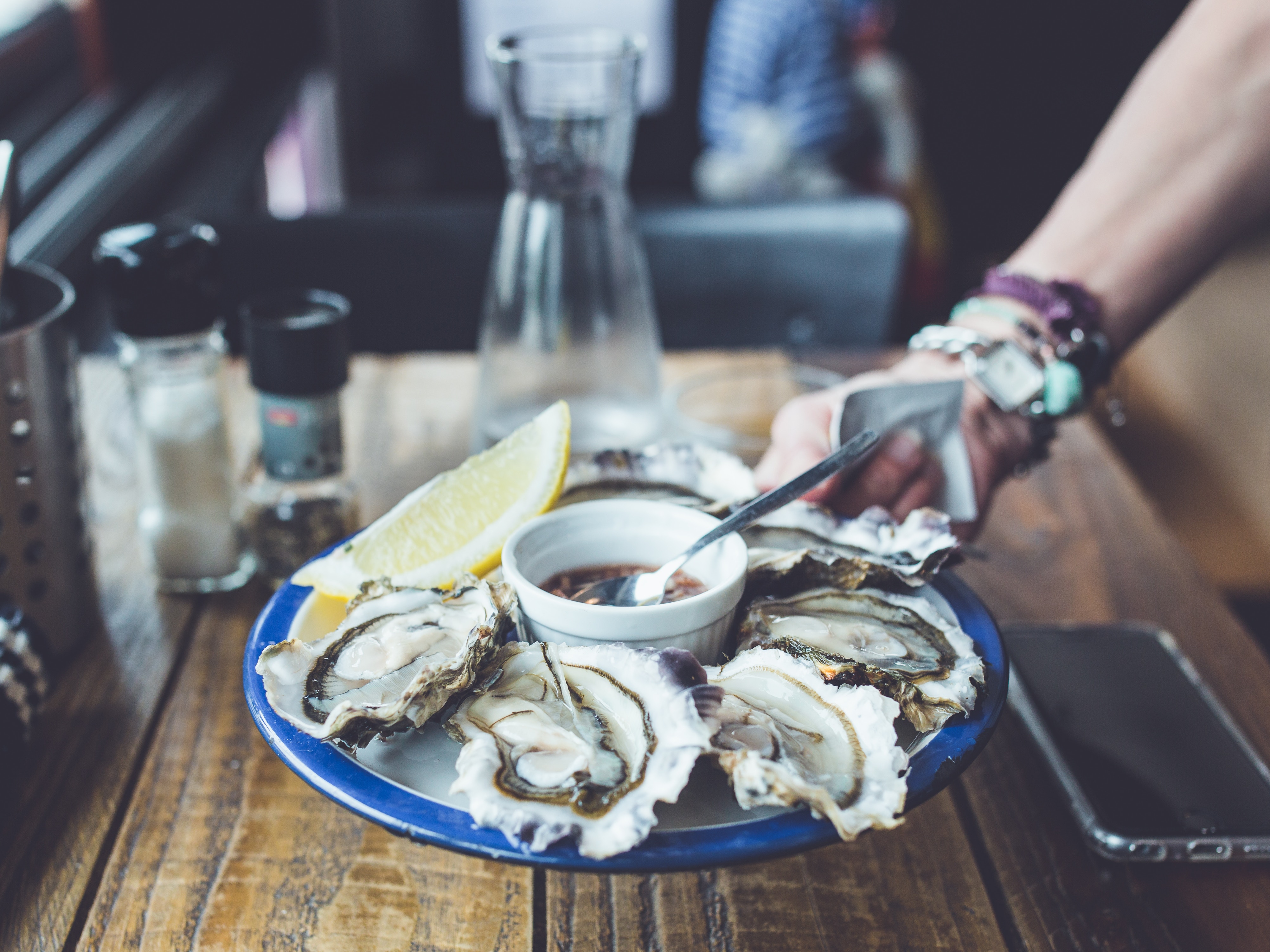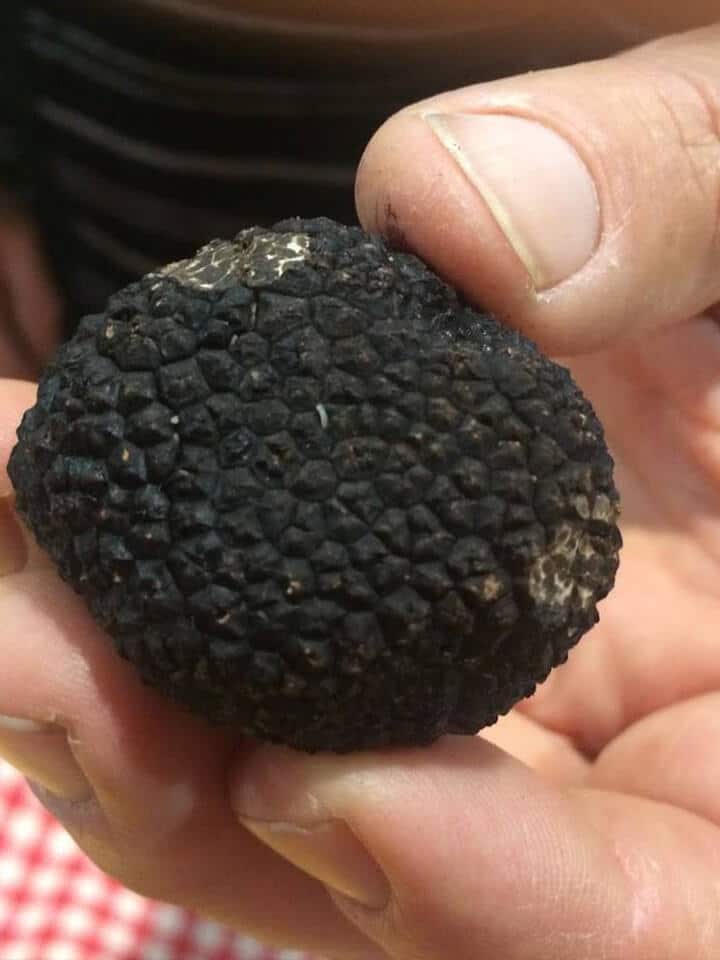Meat, seafood, wines, spirits and sweet treats
Fellow food lovers, today we’ve made a date in Charente and Charente-Maritime to discover the delicacies they have to offer. Charente’s cuisine is just like its terroir: authentic and sophisticated. Its simple recipes take a straightforward approach to rare and exceptional products.
Delicious ingredients
Charentais melon
A mainstay of summer meals and aperitifs, Charentais melons are paired to spectacular effect with white pineau des Charentes. Charentais melons hide juicy orange flesh beneath their pretty, grooved yellow-green rind. This melon, a member of the cantaloupe family, takes its name from its history. Imported to France from the 15th century onwards, it was first cultivated in Charente’s own soil. Field-grown, the melons are harvested by hand in the early morning in July and August. Everyone has their own trick for choosing a melon! Our advice: it should feel heavy, and a little crack near the stem is a sign it’s ripe.

Oysters, the muse of Charente
Charente-Maritime is home to Europe’s premier oyster basin, Marennes-Oléron. The basin’s ecosystem is protected from the sea breeze. It allows the oysters to be farmed or matured in the oyster beds, former shallow salt marshes. The water is replenished by the tides. Famous the world over, Marennes-Oléron oysters owe their reputation to their light nutty flavour and unique colour. It comes from a microscopic algae present in their flesh. The first seafood product to be granted the Label Rouge (first for thefine fattened green oysters, and then for oyster-bed grown oysters), since 2009 Marennes-Oléron oysters have benefited from a protected geographical status.

The kuruma prawns of the marshlands
Instantly recognisable thanks to their tiger stripes, the marshlands’ kuruma prawns are farmed by a handful of passionate oyster farmers. In the mud of the marshlands of Marennes, Seudre, Ré and Oléron, these nocturnal creatures have found a perfect shelter and food source to help them grow. There are just four to six prawns per square metre, compared with 100 times more in the farms in some tropical countries. From the end of July to the end of November you can find them on fishmongers’ stalls, or buy them directly from the producers.

Bouchot mussels
Their traditional production methods make them the only French product to bear the European traditional specialities guaranteed label. Bouchot mussels are farmed on ropes coiled around wooden stakes (the bouchots) which are regularly submerged and then uncovered by the tides. This farming technique keeps the mussels in contact with the sandy soil and gives them a highly prized, delicately salty flavour. In Charente-Maritime, you can see these unusual farming methods in action in the Bay of Aiguillon.
The snails are coming out of their shells
In Charente, they don’t talk about “escargots”, but “cagouilles”, the popular garden snails common in the area. Don’t miss the chance to enjoy a nice pan of cagouilles à la charentaise, snails stuffed with meat and slow-cooked with white wine, carrots, garlic, onion, thyme, bay leaves, tomato and, of course, a dash of cognac! True food lovers add some chopped boletus mushrooms when they’re in season, but shhh, you didn’t hear it from us!
Early potatoes from Île de Ré
The first potato to receive protected designation of origin, early potatoes from Île de Ré are harvested before they’re ripe; their sugars don’t have time to turn into starch, they’re low in calories and they offer a delicate flavour. You’ll find them on stalls from mid-May to the end of June. Their unique, slightly salty flavour makes them a true star among the region’s products. They’re appreciated for their delicate flavour, firm and tender flesh and fine skin. Don’t bother peeling them: once they’re washed, prepare them by simply browning them in butter or olive oil with a pinch of fleur de sel from the same region!
Salt: white gold from the marshlands
Concentrated in the salt marshes of Île de Ré and the Marennes-Oléron basin, salt farming ensured the region’s prosperity for hundreds of years until the 19th century. Today, a new generation of salt farmers is harvesting this “white gold” by hand, a 100% natural product resulting from the evaporation of salt water from the marshlands thanks to the wind and sun. The famous Île de Ré fleur de sel is considered one of the best salts in the world. Its subtle flavour and crunchy texture enhance the most delicate dishes, and the small white crystals are often used in caramel, ice cream and confectionary by chefs worth their salt.
Manslois, a 100% fresh Charentais cheese!
A 100% Charentais cheese, “le p’tit Manslois” as it’s known here, is a fresh artisanal cheese that has been produced in a cloth using whole cow’s or goat’s milk for three generations. Its texture is smooth and soft, its flavour delicate and creamy. It can be enjoyed in savoury dishes, such as pies and soufflés (or simply mixed with herbs), as well as in sweet ones – it’s commonly used to make a delicious cheesemaker’s cake with a hint of orange blossom (a real treat!).
Truffle, caviar and saffron: gems from Charente
Truffles have always lived comfortably next to vines, and their scent can be found in cognac’s array of aromas. Many truffle patches have been developed in Charente, producing the prizedTuber Melanosporum, better known as Périgord black truffle. Open to everyone, the famous Jarnac truffle market is held every Tuesday from December to February and brings together the region’s truffle growers. After the experts have ensured the truffles’ quality by cutting into them with a knife and certifying each one, the market opens officially to the sound of horns – a unique (and fragrant) experience!
Formerly reserved for the élite, caviar is now finding a wider audience. While wild sturgeon have been subject to strict protection measures since 1982, farms have been established in Charente. In Gensac-la-Pallue and Saint-Genis-de-Saintonge, farms use patience, expertise and eco-friendly practices to offer high-quality caviar: enjoy it à la charentaise with a cognac chilled in ice to -18°!
Saffron is the only spice derived from a flower, and it’s also one of Charente’s treasures. In the Middle Ages, saffron farms spread the area of Angoumois’ name as far as Germany, Hungary and Holland. Today, there are many saffron growers who cultivate the pretty mauve crocus from which the precious spice is extracted. The Champniers Safran association, which aims to revitalise this delicate production process, organises regular events and saffron markets. The regional “Poitou-Charente Approved” label guarantees the product’s origins and quality.
Don’t forget that saffron goes well with both sweet and savoury flavours. Opt for saffron threads (the flower’s stamens) and leave them to infuse in a hot liquid (such as water, cream or fruit juice) for a few hours so that all of their aromas can fully develop, before using the flavoured liquid in your cooking.
Meat from a land that rears quality
Among Charente’s unmissable culinary delights are Charentais grillons. Lean pork, such as shoulder and leg, is browned, seasoned and preserved for hours in fat. Grillons are enjoyed cold on a slice of bread. In Charente, it’s not unusual to see them as an accompaniment to a plate of oysters, and tradition dictates that on 1st May Charentais grillons are eaten with a garlic scape (a young garlic clove).
Prefer poultry? Treat yourself to the crème de la crème of Charentais poultry, the avian Rolls Royce: a Barbezieux chicken! This impressive fowl, which was saved from oblivion by a group of passionate fans, boasts a black plumage with green flecks, a bright red crest and pretty white wattles. Thanks to very strict rules governing their feed and farming, the resulting product is excellent: the meat is fine, firm and tender and has an incomparable flavour.
An unmissable product for fans of quality meat is Chalais veal. This veal is from calves reared solely on their mother’s milk and is a particularly tasty white meat. It contributes to the excellent gastronomic reputation enjoyed by Charente, where it’s produced.
Seafood addicts can’t enjoy Charentais specialities without trying the oysters, the pride of Charente-Maritime!
To finish your feast properly, make room for some Charentais desserts.
Charente, heaven for those with a sweet tooth
Cornuelle
Charente’s sweet treats include Cornuelle, a delicious triangular biscuit made from shortcrust pastry and studded with pink and white aniseed. Originally from Villebois-Lavalette, Charente, this Charentais cake is traditionally eaten around Palm Sunday; box tree leaves would be placed in the hole in the middle of the biscuit to be blessed during mass. And if you can’t attend the traditional Fête de la Cornuelle in Villebois-Lavalette on Palm Sunday, don’t worry – the pâtisseries in this “Small Town of Character” (Petite Cité de Caractère®) sell them year-round!
Galette Charentaise
Formerly enjoyed on special occasions, the Galette Charentaise is a traditional cake from Saintonge. It has a spongier texture than its cousin, the Broyé du Poitou. Made from flour, eggs, sugar, a healthy dose of butter (from Surgères, of course!) and a bit of baking powder, it’s traditionally flavoured with the plant that has come to represent the Poitevin marshlands: candied angelica. A true delicacy!
Chocolats
Good news for chocolate lovers – their favourite product is also a priority for foodies in Charente. The region’s chocolatiers will gladly help you discover their chocolate Marguerites (created for Marguerite de Valois, sister of Francis I and patron of the arts), and some will even share their secrets during a workshop or tour.
There’s another chocolatey speciality to be discovered in La Rochefoucauld: Pichotte. The secret recipe for this log-shaped chocolate has been carefully passed on since 1940. A Pichotte is a marzipan fondant centre subtly flavoured with alcohol before being dipped in chocolate.
Another sweet curiosity originating from the town of Confolens is Kroumir, a delicious marzipan sweet gently dipped in chocolate barley sugar. This evocatively named sweet is inspired by eastern flavours.
We could go on listing these Charentais delicacies. To discover the many other specialities offered by our region, go wherever your fancy takes you – and trust your taste buds!
Reference website: https://www.terredesaveurs.com









